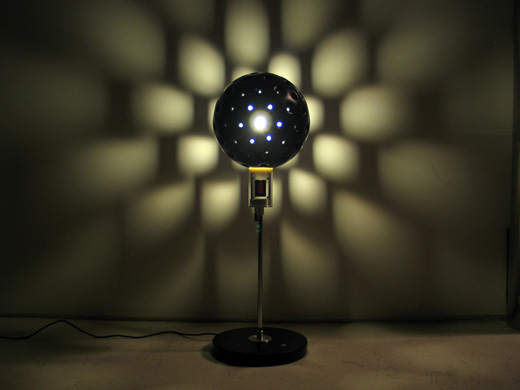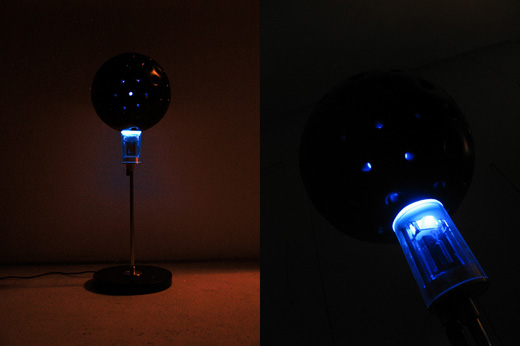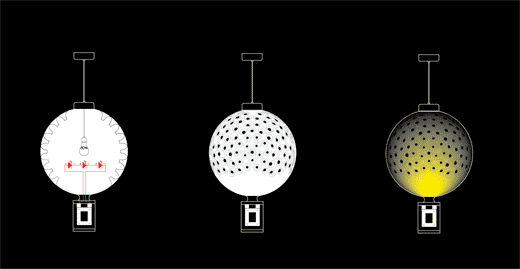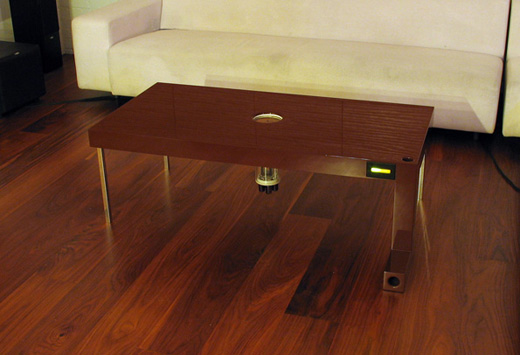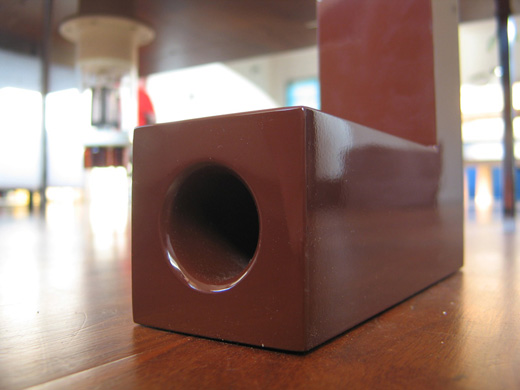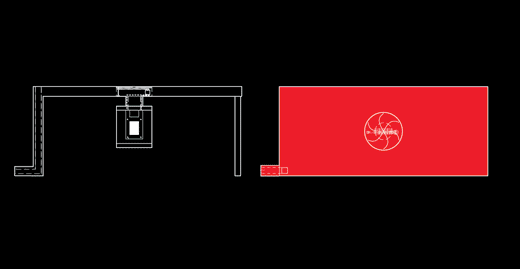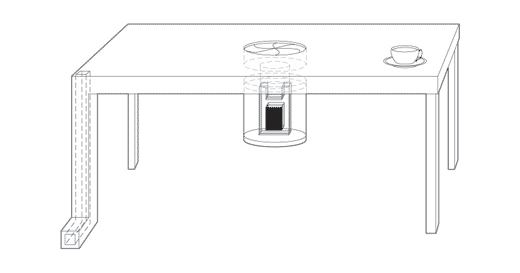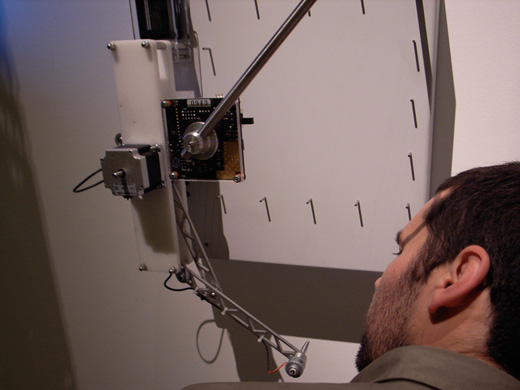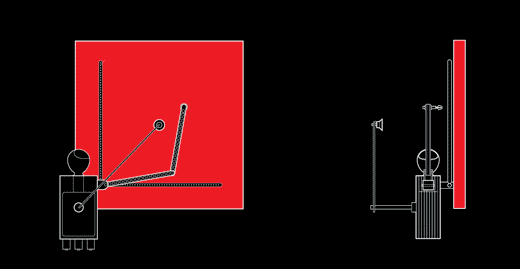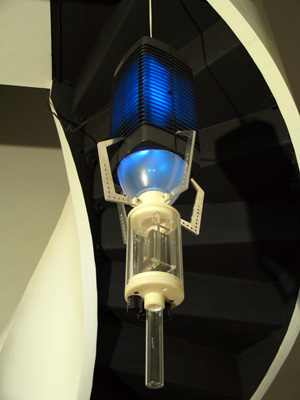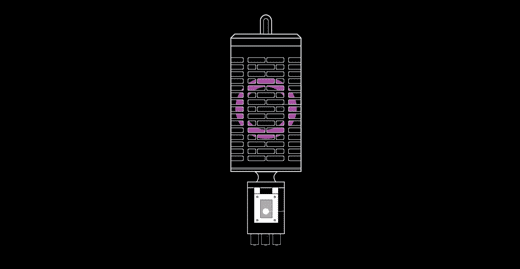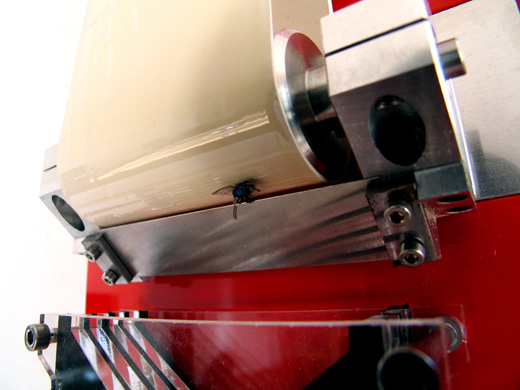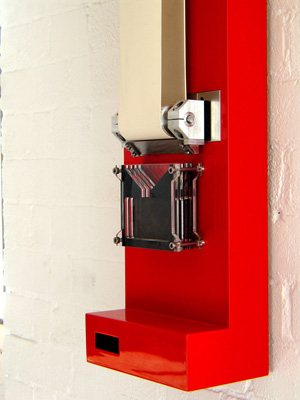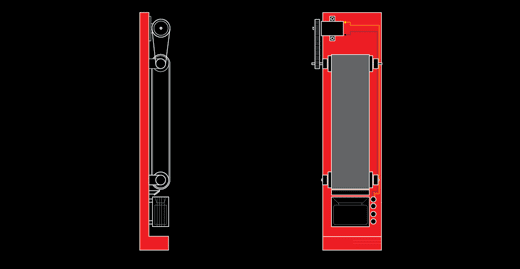Carnivorous Domestic Entertainment Robots
Auger-loizeau and Alex Zivanovic
Over the coming years, Robots are destined to play a significant part in our daily existence. The idea of sharing our lives with these artificial entities in their various guises has captured the public imagination for decades.
Robots have represented both our hopes and fears for what the technological future may hold, yet at this time they remain very much an enigma. There is a huge disparity between the profound potential robots exhibit in the realms of science fiction and our imagination; the banal reality of vacuum cleaners, lawnmowers and robotic pet dogs; and the vision of robots as seen through the eyes of computer scientists and engineers.
With this project we propose an alternative perspective on domestic robots, exploring both the aesthetics and functionality that may elicit a symbiotic co-existence with humans in their homes.
To achieve acceptance the robots operate on different levels:
- Inspired by natural methods of adaptation, they have shunned the stereotypical look normally associated with robots and adopted a fashionable, contemporary design aesthetic. In this way they operate as exclusive furniture and household accessories.
- Utilising the microbial fuel cell as an energy source the robots reference strategies of predatorial insects, reptiles and plants such as the wolf spider, the chameleon and the Venus flytrap and apply these harvesting techniques to the acquisition of food. This gives them autonomy and to a degree they become living entities existing in a similar way to an exotic pet such as a snake or a lizard, where we provide living prey and become voyeurs in a synthesized, contrived microcosm.
We might sit around the objects waiting for the spectacular moment when the prey is captured and slowly transformed into moving energy bars on the graphic displays built into some of the objects.
In this way they provide a dark form of entertainment competing with the spectacle of life seen in television programs such as Big Brother, Wife Swap or edited and dramatised depictions of war. As consumers of these programs, like those who keep vivariums, we have the potential to be repulsed, engaged or both.
They are currently built as a series of five semi-operational prototypes:
- Lampshade robot
- Mousetrap coffee table robot
- Fly stealing robot
- UV fly killer parasite
- Fly-paper robotic clock
Flies and moths are naturally attracted to light. This lamp shade has holes based on the form of the pitcher plant enabling access for the insects but no escape. Eventually they expire and fall into the microbial fuel cell underneath. This generates the electricity to power a series of LEDs located at the bottom of the shade. These are activated when the house lights are turned off.
A mechanised iris is built into the top of a coffee table. This is attached to a infra red motion sensor. Crumbs and food debris left on the table attract mice who gain access to the table top via a hole built into one over size leg. Their motion activates the iris and the mouse falls into the microbial fuel cell housed under the table. This generates the energy to power the iris motor and sensor.
This robot encourages spiders to build their webs within it's armature. Flies that become trapped in the web are tracked by a camera. The robotic arm then moves over the dead fly, picks it up and drops it into the microbial fuel cell. This generates electricity to partially power the camera and robotic arm. This robot also relies on the UV fly killer parasite robot to supplement it's energy needs.
A microbial fuel cell is housed underneath an ultra violet fly killer. As the flies expire they fall into the fuel cell generating electricity that is stored in the capacitor bank. This energy is available for the fly stealing robot.
This robot uses flypaper on a roller mechanism to entrap insects. As the flypaper passes over a blade, captured insects are scraped into a microbial fuel cell. Electricity is generated to turn the rollers and power a small LCD clock.
Carnivorous Domestic Entertainment Robots were designed by James Auger, Jimmy Loizeau and Aleksandar Zivanovic. Julian Vincent is director at the Centre for Biomimetics and Natural Technologies, and acted as an advisor to the design process. An initial start point for the project was Ecobot, a fly-eating robot developed at Bristol Robotics Laboratory which uses microbial fuel cells to generate its own power.
Microbial fuel cell kits are available from the National Centre for Biotechnology Education (NCBE) at Reading University.
